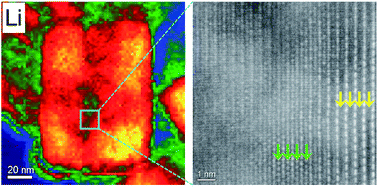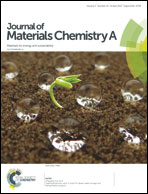Direct observation of layered-to-spinel phase transformation in Li2MnO3 and the spinel structure stabilised after the activation process†
Abstract
Li2MnO3 is an important parent component in lithium- and manganese-rich layered oxides (LMRs), which are one of the promising positive electrode materials for next-generation lithium ion rechargeable batteries. Here, we report the layered-to-spinel phase transformation in Li2MnO3 during the initial charging process to characterise its unique delithiation behaviour, which gives an insight into the relationship between the structure, superior capacities and degradation of LMR electrodes. The atomic-scale observation using scanning transmission electron microscopy (STEM) techniques suggests that the structural transformation occurs in a biphasic manner within a single particle. The formed phase has a Li-defect spinel structure, indicating that the delithiation leads to Mn migration from the transition-metal layer to the Li layer, accompanied by some oxygen release. This layered-to-spinel phase transformation is an essential bulk process in the initial activation of Li2MnO3. During the lithiation in the 1st discharge, the Mn remigration occurs and the layered structure is again formed with significant disordering. During the multiple cycles, the defect spinel structure is stabilised and becomes more oxygen-deficient with a lower Mn valency. As a consequence, the amount of inserted Li decreases, which corresponds to the capacity and voltage fading observed in Li2MnO3 and LMRs.



 Please wait while we load your content...
Please wait while we load your content...